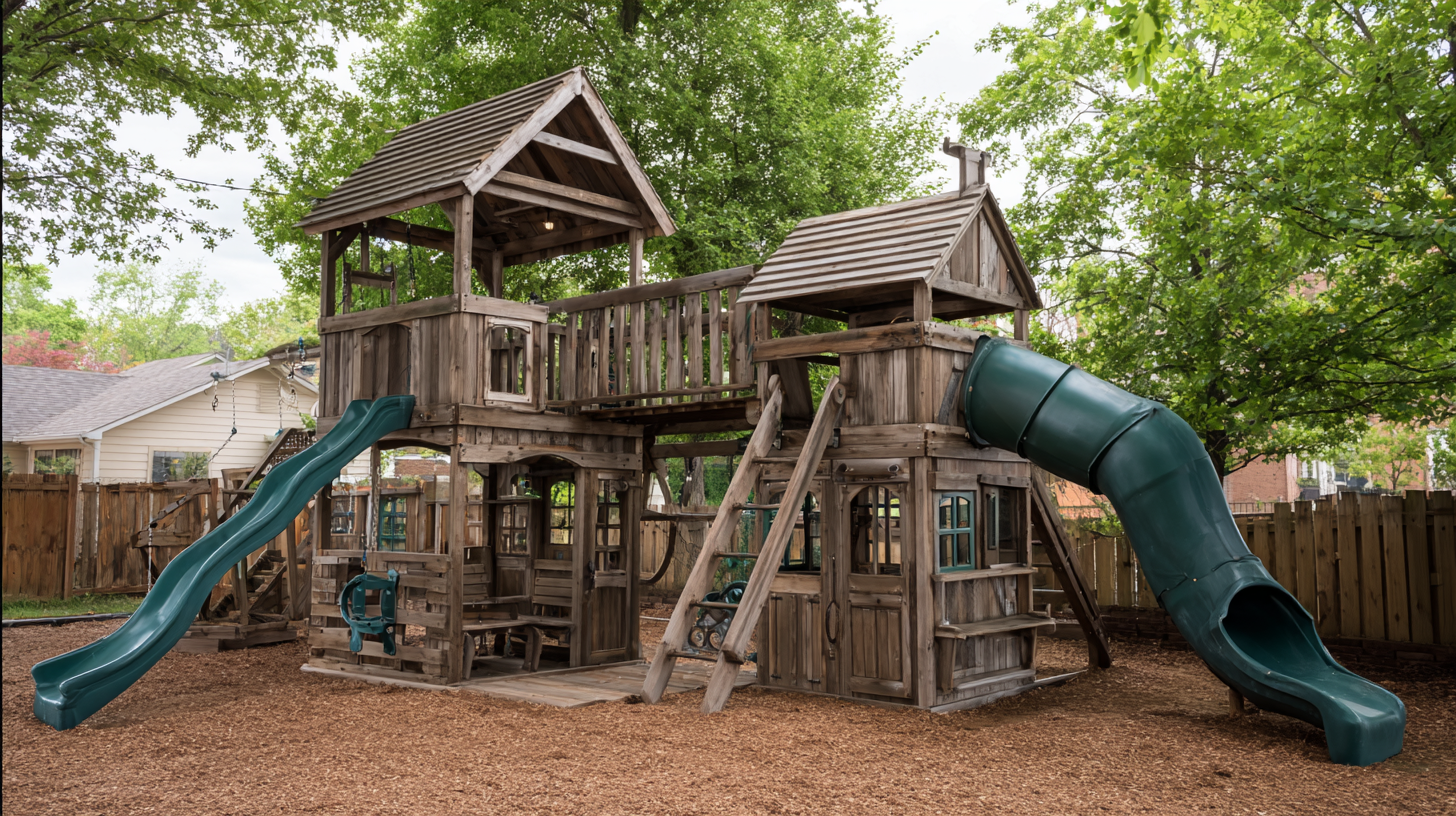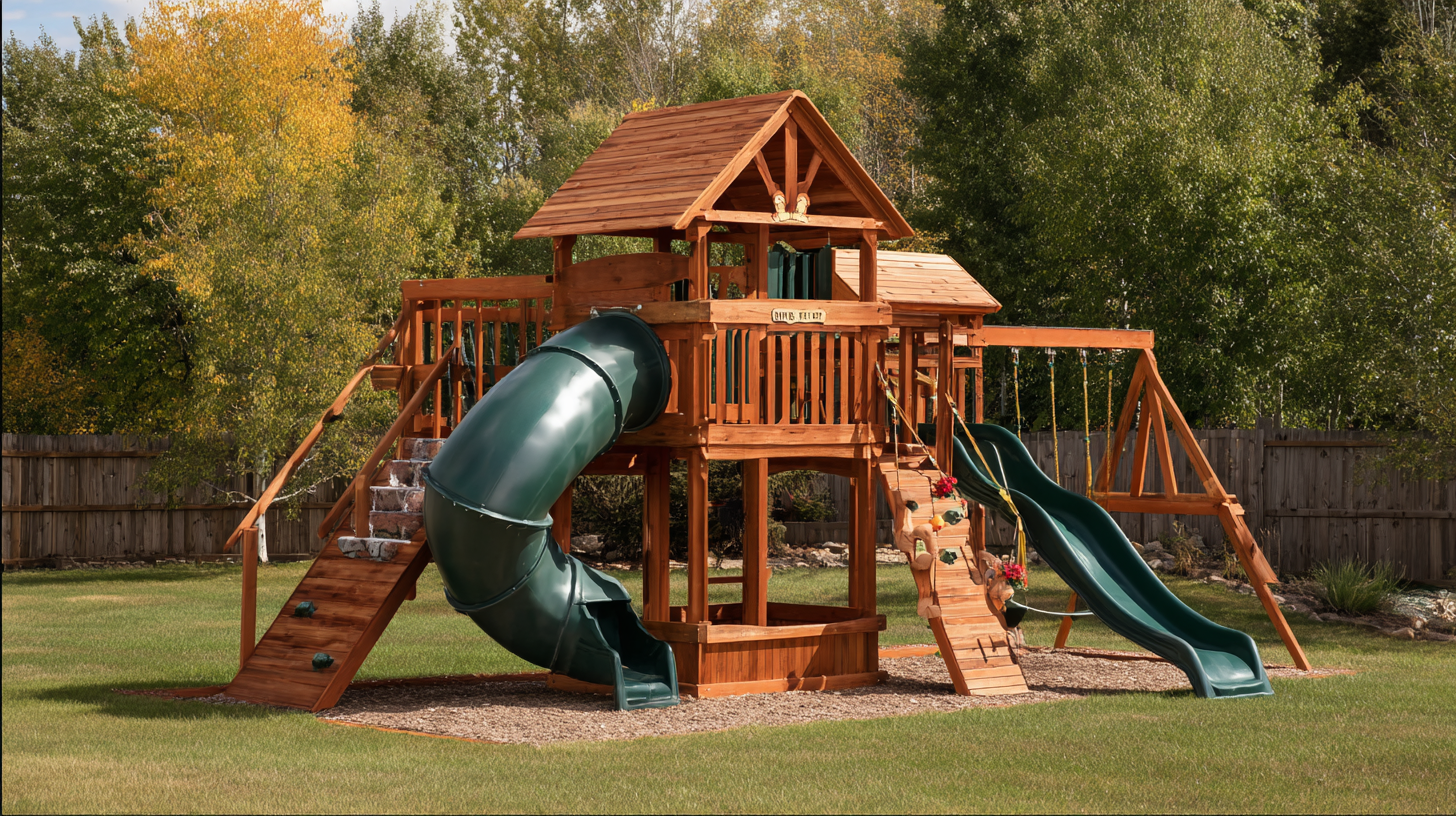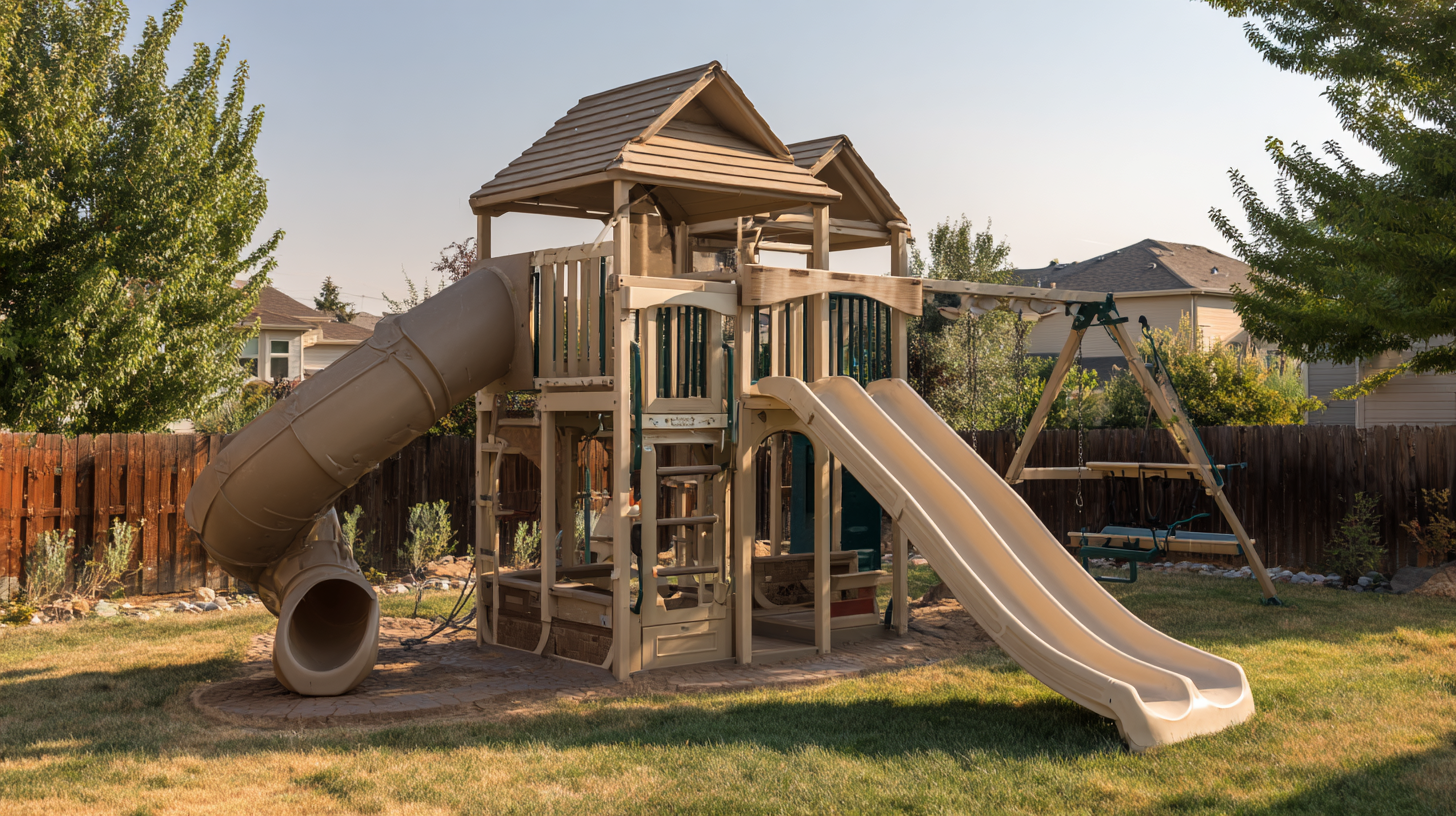 +86-13901441113
+86-13901441113




Choosing the perfect Slide Outdoor Playset for your backyard is an exciting yet challenging task, as it plays a significant role in creating a fun and safe environment for kids to play and explore. With an array of options available, from size and design to safety features and material, it can be overwhelming to pinpoint the right one that fits both your outdoor space and your children's needs. This ultimate guide aims to simplify the decision-making process by providing essential considerations and tips on what to look for when selecting the ideal Slide Outdoor Playset. By understanding the various components, benefits, and potential drawbacks of different models, you’ll be well-equipped to make an informed choice that ensures hours of outdoor enjoyment and active play for your children, transforming your backyard into an adventure-filled haven.

When it comes to selecting the perfect slide outdoor playset for your backyard, several key factors come into play. Safety standards are paramount; according to the American Society for Testing and Materials (ASTM), any playset should meet strict guidelines to ensure the safety of children during play. This includes evaluating the materials used, ensuring there are no sharp edges, and confirming that the structure is sturdy enough to withstand use over time. Additionally, consider the age and size of your children; playsets should be age-appropriate, typically designed for specific age groups to prevent accidents.
Tips: Always check for a certification label indicating compliance with safety standards. Look for playsets made from durable, weather-resistant materials such as cedar or high-density polyethylene, as these can provide long-lasting enjoyment without the risk of splintering or fading.
Another factor to consider is the layout of your backyard. Evaluate the available space to ensure that the playset can fit comfortably while allowing for sufficient buffer zones for safe play. The Consumer Product Safety Commission (CPSC) recommends a minimum of six feet of clearance around all sides of the playset to minimize the risk of injury from falls. Your choice should blend seamlessly into your outdoor environment while also promoting active play.
Tips: Before purchasing, visualize the playset layout using an outdoor space planning tool, and involve your children in the design process to ensure their excitement and engagement.
When selecting the perfect outdoor playset, understanding safety standards and certifications is crucial. The Consumer Product Safety Commission (CPSC) provides guidelines that ensure the playset's design minimizes the risk of injury. Look for playsets that comply with these recommendations, which typically cover aspects like structural integrity, material safety, and proper installation. Playsets that meet CPSC standards often feature rounded edges, non-toxic finishes, and stable anchoring systems, all of which contribute to a safer play environment for children.
Additionally, various organizations offer certifications that further enhance the credibility of outdoor playsets. For instance, the American Society for Testing and Materials (ASTM) sets rigorous testing protocols for materials and performance. When shopping for a playset, check for labels that indicate compliance with ASTM standards. Certification from these organizations not only ensures product safety but also reassures parents that they've made a sound investment in their child's outdoor play. Prioritizing these standards can transform your backyard into a safe and enjoyable space for family fun.

When selecting the ideal slide outdoor playset for your backyard, understanding the material choices is crucial for ensuring durability and safety. Wood, plastic, and metal each have their unique advantages and considerations. Wooden playsets, often crafted from cedar or redwood, deliver a natural aesthetic and robustness. They are less prone to fading in sunlight compared to plastic, and many parents appreciate their classic look. However, wooden sets require regular maintenance, including staining and sealing, to protect against weather damage and splintering.

Plastic playsets are another popular option, primarily because they are lightweight, easy to assemble, and require minimal maintenance. They are typically molded into fun shapes and bright colors that attract children's attention. However, it's important to choose high-quality plastic, as cheaper variants can become brittle over time, particularly in extreme weather conditions.
Metal playsets are known for their strength and longevity, providing a sturdy structure that can withstand rough play. On the downside, metal can heat up in direct sunlight and may require padding or safety features to prevent injuries. Evaluating these material options in connection with your specific needs will help you find the perfect slide playset for your backyard.
When selecting the perfect slide outdoor playset for your backyard, understanding the space requirements is crucial. According to a report by the American Society of Landscape Architects, a typical residential playset occupies at least a 10-foot by 10-foot area, but this can vary depending on the specific features and height of the structure. For safety, the recommended clearance around the playset should be at least 6 feet on all sides, which brings the total footprint to approximately 24 feet by 24 feet. This extra space allows for adequate fall zones to minimize injury risks.
To calculate the ideal area for your playset installation, homeowners should first consider the dimensions of the playset itself, factoring in any slides, swings, or climbing areas. The Consumer Product Safety Commission provides guidelines stating that, for every foot of height, there should be an additional 6 feet of clearance around the playset. Therefore, for a slide that is 6 feet high, you’d need a minimum of 36 feet of clearance. It’s essential to also consider ground coverage; using mulch or rubber mats can help cushion falls, further enhancing safety while maximizing the usability of your outdoor space. By carefully measuring and planning, you can create a safe, enjoyable environment for children to play.
| Playset Type | Dimensions (L x W x H) | Recommended Area (sq ft) | Safety Zone (ft) | Age Range |
|---|---|---|---|---|
| Basic Slide Set | 8' x 6' x 5' | 64 | 3 | 2-5 years |
| Climbing Frame with Slide | 10' x 8' x 7' | 80 | 4 | 3-8 years |
| Playhouse and Slide Combo | 12' x 10' x 8' | 120 | 5 | 4-10 years |
| Large Adventure Set | 15' x 12' x 10' | 180 | 6 | 5-12 years |
In 2023, the outdoor playset market continues to evolve, revealing distinct trends in consumer preferences for various types of inflatable toys such as pools, castles, slides, and ball pits. Recent industry reports indicate a growing preference for multifunctional playsets, which offer a combination of features that enhance interactive play experiences. For instance, inflatable pools paired with slides have gained popularity, emphasizing the desire for versatility in outdoor entertainment. This shift reflects a broader trend towards creating family-centric backyard environments that prioritize both fun and safety.
Distribution channels also play a crucial role in shaping market dynamics. Professional retailers, supermarkets, and large retail chains remain pivotal to consumer access; however, there has been a notable increase in online shopping for outdoor playsets, driven by convenience and a wider array of choices. Data from market analysis firms suggest that online sales of inflatable products may account for over 35% of total sales by the end of the year, further transforming the retail landscape. Regionally, areas with warmer climates show higher demand for pools and water-related playsets, while castles and slides remain popular across diverse demographics, reflecting the varying preferences influenced by geographic location and cultural factors.





